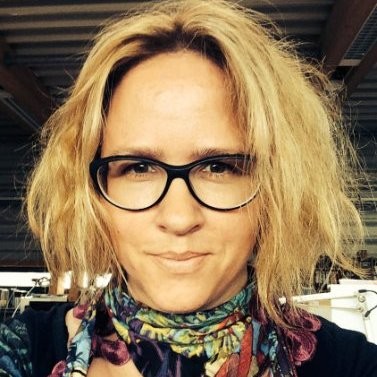Workshop templates
Find inspiration for your next session with a high quality workshop template. Speed up your workshop planning process and increase engagement among your workshop participants with a proven process.
Follow instructions from an expert facilitator or adjust the workshop template to your needs!
Lightning Decision Jam (LDJ)
Uncover and Solve Problems without Unstructured Discussion
It doesn’t matter where you work and what your job role is, if you work with other people together as a team, you will always encounter the same challenges:- Unclear goals and miscommunication that cause busy work and overtime
- Unstructured meetings that leave attendants tired, confused and without clear outcomes
- Frustration builds up because internal challenges to productivity are not addressed
- Sudden changes in priorities lead to a loss of focus and momentum
- Muddled compromise takes the place of clear decision- making, leaving everybody to come up with their own interpretation.
This is why AJ&Smart created Lightning Decision Jam (LDJ). It’s a simple and short, but powerful group exercise that can be run either in-person, in the same room, or remotely with distributed teams.
Rather than having endless, circular discussions about what the one, “perfect” solution could be, we embrace an action- oriented and experimental mindset and aim to make progress fast, even if it’s based on assumptions.
2. We work together, alone Instead of working in an open forum where the loudest, most extroverted person can push their ideas on the group until they get exhausted and give in, we create an environment where every individual can contribute ideas, without any group discussion or debate. All participants work alone, but aligned on a common goal with the rest of the team.
3. Don’t rely on creativityGood ideas can come from anywhere. It doesn’t matter if you consider yourself to be a creative person or not, our process will help you to contribute ideas.
4. Tangible beats abstract
If you describe an idea to your team, everybody will have a completely different interpretation of what you were trying to communicate. This leads to a lot of unnecessary confusion. Instead, when presenting our ideas, we make them as tangible as possible, whether through sketching them out, or showing comparable examples.
In addition to this workshop template, we also offer videos demonstrating how to use LDJs on our YouTube channel at: www.youtube.com/ajsmart.
Overview: www.youtu.be/33hBnZzoFAg
1-Hour Guided Workshop: https://youtu.be/w9MvYDaA1Bk
Remote LDJ: https://youtu.be/0iVQYHHCTf0

Quarterly planning & goal setting workshop
This is an effective goal setting and alignment process that helps teams to define the priorities for an upcoming period - typically to set key objectives (Rocks) for a quarter.
This template agenda will give you a step-by-step process to follow, and you can find more information and real-life examples in the following blog post:
https://www.sessionlab.com/blog/quarterly-planning-workshop

Effective Meeting Agenda
This is a basic, flexible template illustrating the building blocks of an effective meeting. Adapt the timing of the session to your own needs and get started in the journey to make your organization's meetings the best they can be!
For more on facilitating a meeting, find some quick tips and tricks in this guide.

Ideation Workshop
- Facilitators: 1-2 experienced facilitators
- Participants: 12-30
- Difficulty level: medium
- Time: full day
- Goal: come up with a large number of innovative ideas and inspire participants with disruptive cases, future tech and trends and opposite thinking.

System Mapping Workshop
A 3-hour workshop designed to help your organization see the big picture. Literally. Gather team members and stakeholders together to visualize the various elements of a system and draw connections. With a map of the territory finally at hand, discuss findings, gain insights, and potentially even define points of intervention for innovation and change.
Some applications of system mapping workshops are:
Identifying points of intervention in a large organisation.
Facilitating circular economy projects.
Landscape and resource management and policy-making.
Preparing for multi-stakeholder participatory processes.
Helping NGOs and volunteer organizations select impactful projects.
..and more!
At this link you can find a slide deck explaining how the University of Edinburgh used this approach to map a whole production system, using causal loops and identifying points for intervention.
FACILITATION NOTES
You will need a flexible space with plenty of room for people to move around, small-group tables, and space on the walls to stick and organize notes. If you are working online or in hybrid mode, prepare a shared whiteboard everyone can work on.
HYBRID FACILITATION
People who share the same mode of participation will get the most from working with one another. You don't want people who are in the same room to spend all the 3 hours at their computer as if they were working remotely! With this in mind, design for discussions and sharing to happen among people who are in the same location (in other words, ask the people in the room to discuss with one another and those joining remotely to discuss among themselves). Then, make sure everyone puts their map in the same online whiteboard and facilitate comparisons. How can each map enrich the others?
Hybrid workshops notoriously need more attention to the tech setup. Make sure everyone can clearly see the shared map (e.g. with a good projector setup), and that you have great wi-fi in the room.

Team Self Management Workshop
This workshop from Switch to Eleven strategy & agile studio is designed to help teams improve self-management: improving autonomy, alignment, self-sufficiency, and trust among the group.
Participants begin by determining their current state of self-management using 8 areas:
Autonomy
Trust
Decision making
Regular feedback
Experimentation
Responsibility
Adaptability
Transparency
Next, the group considers where they would like to be and then ideate on ways to concretely improve self-management for the team. By the end of the session, the group has an action plan for making the desired change a reality!
You can use the attached Miro board when running this workshop online, though the workshop works great offline with post-its and flip charts!
Note that all timings are subject to change based on your group. Adjust to your needs!
Template created by Nina Pozderec at Switch to Eleven strategy & agile studio.

Marketing Strategy Sprint
The Marketing Strategy Sprint is a step-by-step process for clarifying campaign creation or entire marketing strategies in a single working day. It works well in both remote and live settings and is especially useful for aligning marketing teams and decision-makers.
Who should participate?This is an ideal exercise for marketing teams. The optimal group size is 3–7 people. Someone from the business side and management board should be included. It can be the director/VP of the business area you are going to cover or in smaller companies the CEO, but it is crucial to have buy-in from the top. As a marketer, there is also the hidden agenda to give decision-makers a better understanding of the role of marketing. This is a perfect way to provide insight into what you do and are trying to achieve.
If the marketing & comms team isn’t big enough, just bring in bodies who are relevant to the topic/business. You need to understand your customer and business to get this to work so sales gals, customer success guys and other people working with the clients are your best bets.
What marketing issues can I clarify with this?You can do anything from campaign creation to overall marketing strategies. You just adjust your scope accordingly. I recommend starting with something specific like a campaign or a plan to target one audience. Then you can start combining the data into larger entities.
How long does this take?The whole canvas takes a workday to fill out. When you are working on campaigns or the same segment/product, it’ll take you two hours.
Obviously some problems are larger then others and you may need more time on solving them. That’s why you are the big marketing hotshot or the future unicorn CEO: you are able to use your own judgement on time allocation.
If you are starting your marketing, re-branding, doing a product launch, expanding to a new market etc., you’ll be spending a couple of days defining the cornerstones of your marketing.
What do you need?People: a facilitator (You?), a marketing team, a decision-maker. Bodies are optional.
Other stuff: Whiteboard/wall space, tons of Post-it notes, Sharpies, sticky dots, a time timer, good coffee, a lot of water, some snacks, energy & enthusiasm.
Prep before the workshopThe participants should be briefed to be on time and to have an open mind.
Everyone has one job to do before the workshop: use 15 minutes to list the competition and their main selling argument.
A voluntary, but preferred task is to watch Simon Sinek’s TEDx talk about understanding your WHY.
During the workshopThe idea of the workshop is to extract individual ideas. This is why for the majority of the workshop, work is done individually in a group. Unless stated otherwise, all of the exercises are done individually in silence.
Discuss only when the facilitator encourages it. This may seem odd in the beginning but trust the process. You will be surprised about the method outcomes.
After every stage the facilitator will photograph the results and add them to a slide deck and/or a physical canvas. A physical canvas is recommended, because this helps on maintaining focus of the end result and it is easy to revise the previous steps.
Voting during the workshopThe voting process is the same throughout the workshop. Everyone is given a predetermined amount of dot stickers/vote. When the time to vote comes, everyone silently and simultaneously places their stickers on the note they want to vote for. You are allowed to vote on your own answers and you can spread your dots on different notes or put them all on one. This is up to you.
Tips for running this workshop online
Pick an online whiteboard tool that allows you to use a large, zoomable canvas.
If you’re not using an online whiteboard, we’d recommend using a collaboration tool such as Google Docs to collect the information for each step under a separate heading. Invite everyone into the document to share their ideas but be very clear in regards to editing rights.
When facilitating group discussion, we’d recommend that participants use non-verbal means to indicate they’d like to speak. You can use tools like Zoom’s nonverbal feedback tools, a reaction emoji, or just have people put their hands up. The facilitator can then invite that person to talk.
Use built-in dot voting tools or allocate dot shapes manually in your online whiteboard tool for the voting section. If using Google Docs or similar, have people comment as a vote.
Marketing Strategy Sprint from Karl Filtness at MEOM.

Team Canvas
- creating a team;
- clarifying goals and addressing overall team performance (e.g. when you feel stuck as a team, or when you need to get a lot of stuff done);
- growing and onboarding new team members;
- general alignment sessions (recommended every 2-3 months
Download the Team Canvas template and mobile-friendly How To at http://theteamcanvas.com

Feature Sprint for Startups
You'll align on what your MVP (minimum viable product) is and generate customer-centric features you can move towards developing too! This process can help quickly clarify and solve many of the problems young start-ups have, for example:
- Teams that have been “going in circles” when talking about next steps
- Have a lot of ideas but don't have a starting point
- Lack clarity about the specific value proposition for marketing, web, and social content
Tips for running this workshop online
Pick an online whiteboard tool that allows you to use a large, zoomable canvas.
If you’re not using an online whiteboard, we’d recommend using a collaboration tool such as Google Docs to collect the information for each step under a separate heading. Invite everyone into the document to share their ideas but be very clear in regards to editing rights.
When facilitating group discussion, we’d recommend that participants use non-verbal means to indicate they’d like to speak. You can use tools like Zoom’s nonverbal feedback tools, a reaction emoji, or just have people put their hands up. The facilitator can then invite that person to talk.
Use built-in dot voting tools or allocate dot shapes manually in your online whiteboard tool for the voting section. If using Google Docs or similar, have people comment to indicate a vote.
Want more context? Watch this video from Justin on how the feature sprint helped Vera, a plant care app.

Business Model Canvas Workshop
The Business Model Canvas (BMC) is a simple, visual tool that maps out the nine key areas that are essential to any project, initiative, or business. By thinking through and completing the nine sections of a BMC, early stage change-makers, like entrepreneurs and intrepreneurs, not only design their business model but also answer the fundamental questions any business must solve.
The BMC enables people to temporarily separate themselves from their idea and adopt a bird’s eye view of how things will work, in practice.
While BMCs are extremely helpful to flesh out ideas at the earliest stages of development, they can also bring much value even when the project or business already exists.
By thinking through the nine essential areas of the BMC, aspiring entrepreneurs and intrapreneurs gain the traction to experiment and take progressive steps toward bringing their ideas to life.
Based upon Strategyzer's Business Model Canvas. Utilized under Creative Commons Attribution-ShareAlike 3.0
Download the Business Model Canvas here: https://www.strategyzer.com/canvas/business-model-canvas

Persona Empathy Workshop
Personas are one of the most popular tools in user research, and are a great way to create shared understanding about users. But they are useless unless people know what they are and how to utilize them.
Designed for research or user-focused teams who want to help others in their organization understand the value and importance of customer personas, this 1-hour 20 minute workshop agenda is highly focused step by step process that is simple and easy to run.
- You'll demonstrate the power of personas and how preconceptions about users and customers are often incorrect.
- Your team will gain some of the tools necessary to better empathize with users and employ personas across the organization
- You'll generate ideas on how to solve problems and meet the needs of your chosen customer persona
This workshop is intended for groups and organizations that are already using or start to use customer personas and who are trying to extend the understanding and use of personas across an organization. You may run this with participants in less user-focused parts of the organization, or to begin demonstrating the value of personas to your team in a concise, effective way.
Tips for running this workshop online
Pick an online whiteboard tool that allows you to use a large, zoomable canvas.
If you’re not using an online whiteboard, we’d recommend using a collaboration tool such as Google Docs to collect the information for each step under a separate heading. Invite everyone into the document to share their ideas but be very clear in regards to editing rights.
When facilitating group discussion, we’d recommend that participants use non-verbal means to indicate they’d like to speak. You can use tools like Zoom’s nonverbal feedback tools, a reaction emoji, or just have people put their hands up. The facilitator can then invite that person to talk.
Use built-in dot voting tools or allocate dot shapes manually in your online whiteboard tool for the voting section. If using Google Docs or similar, have people comment to indicate a vote.

The Scent of Shame
🌈 Smell Your Way Home: Experimental exploration to disarm shame and activate inner wisdom.
In this interactive and playful environment, participants have the opportunity to:
- Explore the roots of shame and how it affects your life
- Identify triggers that lead to feelings of shame and self-doubt
- Learn strategies for recognizing and challenging shame-based thoughts and behaviors
- Engage in gentle movement and breathing exercises to regulate your nervous system
- Connect with others who are on a similar journey of self-discovery and healing
- Leave with a renewed sense of self-acceptance, self-compassion, and confidence
Using a combination of group discussion, creative expression, and somatic techniques, participants learn how to build resilience and embrace vulnerability as a strength.
Whether they are struggling with shame related to past experiences, current challenges, or simply the pressures of daily life, this workshop will provide them with the tools and support they need to move forward with greater clarity, resilience, and self-awareness.
This template was the winner of the “Community Choice” award in the April 2023 innovative workshop design contest organized by SessionLab and the NeverDoneBefore community.

Emotional Culture Workshop
Get your Emotional Culture Deck at: https://www.ridersandelephants.com/the-emotional-culture-deck

WARP Remote Retrospective
A plan for a remote retrospective using the WARP (wishes, appreciation, risks, puzzles) format and Google Jamboard.
Objectives:
Meaningfully reflect on the end of a period of work with your virtual team
Create action points for the future based on the WARP framework - Wishes, Appreciations, Risks, and Puzzles
Detail steps to be taken, work to be completed, and ownership of future actions that emerge from the retrospective
When should this session be delivered?
The WARP remote retrospective session should be delivered at the end of a project, initiative, or period of work such as the end of a sprint. So long as you are clear with your team about the period of time/work you are focusing on, your retrospective can be both exhaustive and succinct.
Who can facilitate it?
While any facilitator or leader can lead the remote retrospective effectively using the instructions and notes in the template, being familiar with agile retrospective concepts such as the retrospective prime directive can help ensure the success of this workshop.
Acknowledgments
This remote retrospective plan has been inspired by the Spotify Retro Kit.
The 5 stages of retrospective are from the book Agile Retrospectives by Esther Derby and Diana Larsen.
Jamboard template for this retrospective here.

Collaborative Rapid Prototyping
Source: Google Design Sprint Kit

Conversation Cafe: A World Dialogue Relay
This template has been designed for hosts planning a World Dialogue Relay event for UN75 on 24 October 2020.
This Conversation Cafe agenda includes a series of step-by-step elements that will help you guide a group through a structured discussion. This template has been developed by the team at X360 for open use drawing on the UN75 Toolkit and the UNA-USA resources. It is available for use by Connected Conversations dialogue hosts and facilitators everywhere
The agenda elements are designed to be delivered over 2 hours, however, please feel free to adapt this based on the size of your group, and your own facilitation and hosting style. You can even adjust the Conversation Cafe format for your own events and needs!
Before your session
- Review the hosting and facilitation guide at https://connversations.x360.co/relay/
- Register your session on the IdeaSphere at https://ideasphere.x360.co/add-listing/
- Encourage participants to take the UN75 survey in advance, to get the conversation going in their minds and online: www.un.org/UN75
- Designate a note-taker to capture the key points from your dialogue
Capturing feedback
We will provide you with a link to an online feedback form in a format provided by #UN75 to capture your group's conversation. This form will include the following details:
- Main topics covered (from the UN themes + any others)
- Dialogue type (online or in-person)
- Country where the dialogue was hosted
- The top 1-3 ideas for each topic discussed and/or a summary in max 750 characters
- Nationality of participants
- Education level of most participants
- Occupation of most participants
You can choose to complete this feedback process during your session as a group, or summarise notes for submission after the session.
Tips for hosting the session
The facilitator plays a crucial role in these conversations. Some broad guiding principles include:
- Communicate clearly on why the dialogues are taking place, and where the discussion will go
- Respect and facilitate the sharing of different perspectives
- Constructively address conflicting positions and power imbalances
- Adapt to local needs
- Ensure some element of recording and feedback (an online feedback form will be provided)
Tips for running the session online
- Choose a video conferencing tool to host the your group conversation - Zoom, Google Hangouts, Adobe Connect or whatever tool your group prefers is most familiar with is your best bet.
- If facilitating with very large groups, use breakout rooms to help facilitate productive conversations in smaller groups before bringing them back into the main room.
You might want to posit your questions alongside visual resources and collect feedback and notes using an online whiteboard tool. This is great for creating a resource people can revisit after the session. But don't forget that you'll need to share a summary of the group discussion via the online feedback form provided.
When facilitating group discussion, we’d recommend that participants use non-verbal means to indicate they’d like to speak. You can use tools like Zoom’s nonverbal feedback tools, a reaction emoji, or just have people put their hands up. The facilitator can then invite that person to speak.
Use an online engagement tool such as Mentimeter or Poll Anywhere to get quick feedback at the start of each conversation point, or where it feels appropriate.
Need help?
Don't hesitate to reach out to the X360 convening team if you need assistance or you have any questions. You are also invited to join the online collaboration space for the World Relay at https://ideaspace.x360.co.



Want to get your own workshop template featured in the Template Library and help others engage their workshop participants?
Contact us at support@sessionlab.com




















